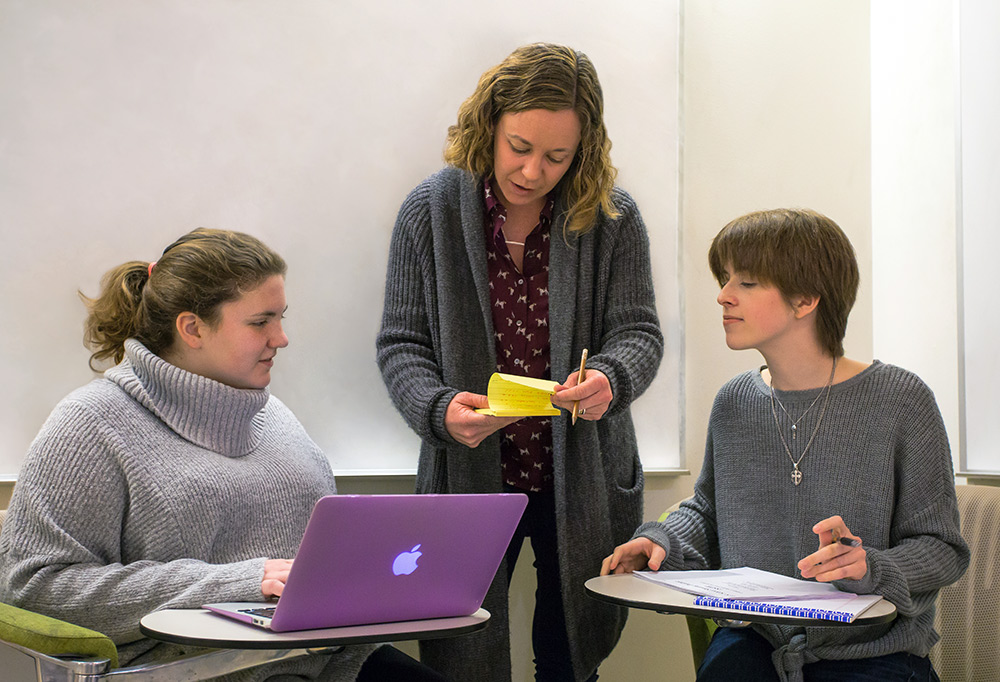A UTD professor created a database that catalogs school shootings across the country in hopes of preventing further tragedies.
Nadine Connell, associate professor of criminology and director of the Center for Crime and Justice Studies, started working on the database in 2014. The information can be used by communities to try and create preventative measures against school shootings by comparing themselves to characteristics of areas and schools listed in the database. When the database is finished, it will have information about school shootings from 1990 to 2016.
“A few years ago, I was teaching a course on youth crime and violence, and there was a big headline that said there had been 230 school shootings since Sandy Hook,” Connell said. “I remember thinking that I studied violence in schools and I hadn’t seen 230 headlines of a rampaged school shooting, so started looking for the incidents that were described.”
Connell’s team will be creating the first complete and standardized database of school shootings in the United States, Connell said. To standardize the data, the team defined a school shooting as any time a gun is discharged, causing an injury or fatality on a K-12 campus during school hours, Connell said. The database also includes incidents on school buses and at school-sponsored sporting events at K-12 campuses because they are under the jurisdiction of the school.
“The amount of data we have to collect is getting bigger, not smaller, so it’s good that we have a good team,” Connell said. “There is no database that is comprehensive, but there is also no database out there that is fully objective.”
Connell’s team consists of UTD undergraduate and graduate students, who work together to research information about the events. One of the students who works as a part of the team is Sarah Gammell, a criminology graduate student.
“It’s not necessarily that we’re collecting a why, but we are collecting all of the information that would help inform a why,” Gammell said.
While the database was in its preliminary state, there were some unsettling trends, Connell said. There was an alarmingly high amount of suicides without another victim, which means students chose to shoot themselves on campus with nobody else around, Connell said. As a result, the team hopes to show a need for more mental health support in schools to try and reduce these kinds of tragedies.
“In the media, there was a lot of overlap that shouldn’t have occurred, and that was one of the reasons that I knew we had to do this database,” Connell said. “People were using the Virginia Tech tragedy as a way to inform K-12, but a university is different from a high school, and from a prevention perspective, it’s not going to be the same thing.”
The database will have information that will help communities identify anything they may need to change within themselves. So far, it is halfway done, and is expected to be completed at the end of fall or beginning of winter, Connell said.
“When we looked by year, we did not see the type of increase (in school shootings) that people were saying existed. I don’t know if there is a real increase, but our data will be the first thing that lets us look at this,” Connell said. “I don’t think the number of incidents has gone up, I think we are just more aware.”
With the current funding scheme, the project will be properly funded until December 2018, the scheduled finish date of the project. However, if the team wished to add more data to the database after the fact, it wouldn’t be as well organized or specific as when the funding was available. This will mean the team will not be able to continue increasing the information contained in the database.
“It is important to be aware that if this is no longer supported by the government, it does change how much we can offer the public,” Connell said.
Another issue the team faced was that various people, even scholars, weren’t willing to accept the facts shown in the database, Connell said. She explained that people don’t want to believe the amount of school shootings per year has decreased, something that was inferred from the database in its preliminary stages. However, the database aims to educate the population, and hopefully it can be used as such, Connell said.
“It’s very important to give access to answers. This isn’t going to hide somewhere, and the long-term goal is to make this database useful and searchable so it’s public and easily accessible,” Connell said. “I think that’s the most important part of what we’re doing, giving people access to their information.”

















